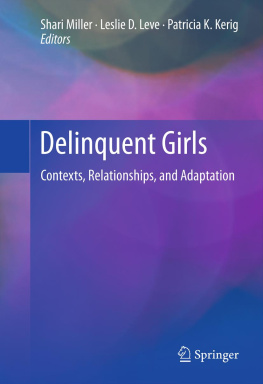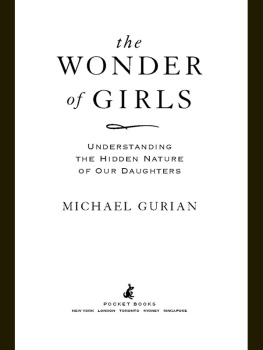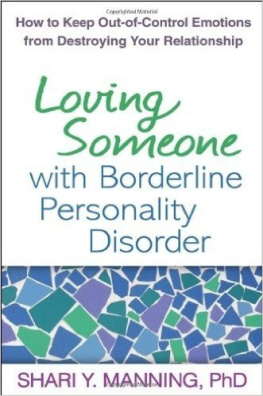Shari Miller , Leslie D. Leve and Patricia K. Kerig (eds.) Delinquent Girls Contexts, Relationships, and Adaptation 10.1007/978-1-4614-0415-6_1 Springer Science+Business Media, LLC 2012
1. Stability and Change in Girls Delinquency and the Gender Gap: Trends in Violence and Alcohol Offending Across Multiple Sources of Evidence
Females commit much less crime and delinquency than males for nearly every category of crime. The gender gap in offending is larger for more serious and violent offenses and narrower for minor behaviors. These are among the most robust and consistent findings in criminology. In recent years, however, the extent and character of gender differences in crime are increasingly being called in question by statistics and media reports suggesting a greater involvement of girls in the criminal justice system.
Girls delinquency as reported in official arrest data evidences substantial changes relative to boys delinquency in recent decades. Girls exhibit some sizeable arrest gains on boys in a number of minor offense categories. However, it is the gains in arrest for assaultive violence and for alcohol-related offenses (drunk driving, liquor law violations) that are most widely recognized by the media, policymakers, and academics. Between 1980 and 2005 in the USA, girls arrests for violent index offenses homicide, rape, robbery, and aggravated assault increased by 87%, whereas arrests of boys actually decreased by 6% (). Arrest statistics show marked increases in girls arrests for aggravated and, especially, simple assault. Girls arrests for aggravated assault increased by 143% and by 375% for simple assault. Boys aggravated assault arrests increased by only 37% and 150% for simple assault. These arrest trends, along with high-profile female delinquency cases and media headlines such as Girls getting increasingly violent, and Girls not all sugar and spice, encourage perceptions that girls violence is rising and the gender gap closing.
The same sorts of headlines and high-profile cases relay images of drinking girls gone wild, suggesting Women are on a binge and Girls today want to outdrink the boys. Recent arrest statistics would seem to support such claims: Young womens drunk driving arrest rates almost doubled from 1980 to 2004, from 233 to 400 per 100,000 women (ages 1820), increasing female representation from 9 to 20% of drunk drivers (Schwartz and Rookey ).
Reasons for the increase in girls arrests for violent and alcohol offenses include multiple proposals. Some assume arrest gains indicate real changes in girls behaviors. Under this supposition, greater female independence increases girls opportunities and motivations for violence the Behavior Change Hypothesis . However, arrest counts are a product of delinquent behavior and responses to it. Evidence is also mounting that girls arrest gains are predominantly artifacts of recent policy and enforcement changes. Specifically, these changes elevate the visibility and reporting of girls delinquency and violence by way of stretched definitions of deviance and the shift toward more formal dealings with youth crime and violence the Policy Change Hypothesis.
To evaluate these hypotheses, we draw on a number of longitudinal data sources that each uses a different method to generate crime estimates. Data sources include official statistics collected by government agencies, such as arrest data collected by local government agencies and disseminated by the FBI. Drunken driving fatality statistics are collected by the Department of Transportation. We also draw on unofficial data, such as self-reports and victim-reports of offender characteristics. These estimates are generated independent of the legal system. Monitoring the Future (MTF) , the National Crime Victimization Survey, and the CDCs Behavioral Risk Factor Surveillance System are highly regarded nationally representative, longitudinal surveys.
Each data source, with its unique strengths and weaknesses, offers at least a slightly different picture of crime. Because these sources of data differ in how they measure delinquency and violence, they are particularly useful for evaluating whether trends in girls delinquency are a product of changes in the underlying violent and delinquent behavior of girls or changes in juvenile justice policies that enhance the visibility and reporting of girls delinquency.
Our confidence of changes in girls violence and delinquency is enhanced if all these sources agree on the nature of the trends, despite measurement differences and dissimilar sources of limitations, whereas that confidence is diminished if the sources are in disagreement.
Hypotheses About the Meaning of Girls Arrest Increases
Behavior Change and Policy Change frameworks are broadly applicable to understanding shifts in all sorts of girls offending trends. We focus here on changes in girls violence because of the high-profile nature of this debate (Steffensmeier et al. ). We briefly assess trends in girls alcohol use and drunk driving across arrest and self-report time-series data because girls alcohol-related arrests recently increased, public health concerns have grown regarding problem alcohol use by adolescents, and reliable unofficial data exist.
The Behavior Change Hypothesis contends that arrest gains indicate real changes in girls behaviors. Dramatic changes in girls lives and experiences may increase their propensities or opportunities to commit violent crimes. Girls today face greater struggles in maintaining a sense of self, confronting complex, often contradictory, sets of behavioral scripts that specify what is appropriate, acceptable, or possible for girls to do. For example, greater exposure to media messages portraying girls as violent, such as in movies like Charlies Angels and Kill Bill and video games like Tomb Raider , might facilitate changing gender-role expectations toward greater female freedom, assertiveness, and male-like machismo and competitiveness. As it becomes more socially acceptable, girls may increasingly turn to violence as a coping strategy or a means of solving interpersonal conflicts with authority figures (e.g., school officials, parents) and peers. The latter may involve arguments with boys in dating contexts but also fights with other girls over ownership of males and defense of ones sexual reputation (Miller and Mullins ). Likewise, gender norms for drinking and drunkenness may be more relaxed, increasing girls use and abuse of alcohol as they emulate masculine drinking patterns and self-medicate with alcohol to alleviate social and interpersonal strains. Heightened role strain and changing normative expectations, combined with increased economic and family stresses might increase girls involvement in physical aggression or problem alcohol use.
The Policy Change Hypothesis contends that girls arrest gains are an artifact of recent shifts in public sentiment and enforcement policies toward more formal recognition and treatment of youth crime and violence, which has elevated the visibility and reporting of girls delinquency and violence. Listed in order of importance, at least four interrelated policy shifts escalate the arrest-proneness of girls today relative to girls in prior decades and relative to boys (for a full treatment of these policy shifts, see Steffensmeier et al. ).













